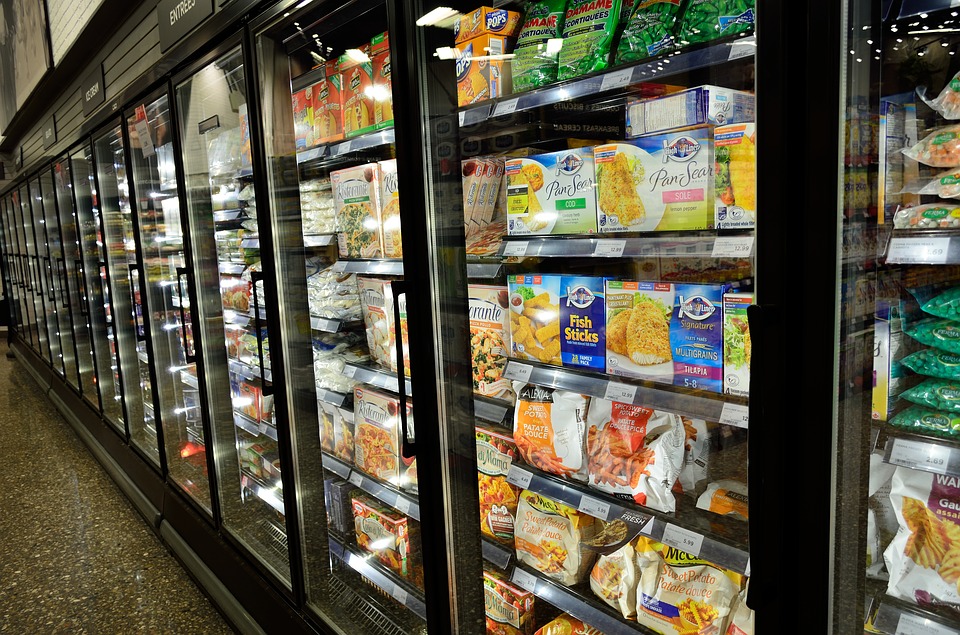Business
Frozen foods and ready-to-eat snacks have become essential in households: Ashok Bansal
Outside food and snacks, especially frozen foods ready-to-eat category, are becoming an essential element of all households – be it for the mid-meal hunger pangs or for tea-or-drink time snacks, says Ashok Bansal, Co-Founder & CEO, Myints. He believes the COVID-19 pandemic has actually helped the frozen food sector immensely.
MyBigPlunge in an exclusive interview with Ashok Bansal, Co-Founder & CEO, Myints, discusses the frozen food sector in the post-COVID world:
What was the impact of the COVID-19 pandemic on the frozen foods sector?
Myints 3 Minutes soft launched in April 2nd week in NCR and immediately thereafter the Covid Ph-II lockdowns happened. Our faith in our disruptive Offerings in the frozen vegetarian snacks was strengthened when we saw the Repeat Orders coming in from premium Outlets (that were open). We clocked more sales even during our soft launch at limited stores than we expected. We were practically sold out in one particular SKU (out of the 3 launched by us).
In general, outside food and snacks, especially frozen ready to eat category, are becoming an essential element of all households – be it for the mid-meal hunger pangs, or for tea-or-drink time snacks. Covid-19 pandemic has actually helped the frozen food Sector immensely in two ways – one, buttressing the customer taste towards the same, and two, by highlighting the challenges in the supply chain which the Industry will have to overcome, going forward.
How did the sector overcome the disruptions in terms of supply chain?
Two aspects clearly stand out. One, the large e-commerce companies tried their best, but largely missed the bus. They could have been the foundation of the next gen home supply of all sought after items. What we saw was major disruptions; with more than delivery of half of SKUs being shut down and only bare essential/high quantum SKUs being supplied.
Two, the Companies that had omni-channel marketing strategy fared much better. The large format Hypermarts did good in terms of customer foot-falls. Outside the frozen category, the neighborhood Kiranas as now giving a push back to the larger e-com and d-to-c companies by adopting technology in their own small ways – even if it is only a Whatsapp number to take the Orders or upgrading to the many Kirana-only Apps available.
What were the challenges?
The challenges were primarily three-fold. Disruption in production, supply chain and at the end of customers sum it up all.
Disruption in production was due to high end production factories being shut down due to safety concerns or were working at 20%-30% of their capacities. Two, supply chain was disrupted since movement of delivery vehicles was severely reduced and a large no of the field manpower itself got affected by Covid or went to their villages/hometowns. Forget the smaller setups, even large e-Com players had no risk mitigation or contingency plans to deal with it.
The customers also were a harried lot – especially in the 2nd wave of Covid in April-May 2021. They avoided going out even to the grocery stores, except for the bare essential needs.
How are things looking for the sector in the post-COVID world?
Actually, fantastic, in two ways. First change will be in the new equilibrium in the Supply chain channels. Second will be in the product offerings. Like any large scale disruption, this period has brought about the structural changes required, especially in the business strategy of the brand Companies.
The small physical stores gave way to large format Modern trade experience; Modern trade was challenged by the large e-com companies with their d-to-c tech enabled models. Now the neighborhood Kirana is giving a strong push-back by adopting technology and has actually turned out to be the savior in many cities.
We will see a healthy equilibrium going ahead in the above 3 channels.
The product offerings in India, by and large, have been dominated by 3-4 very large players (McCains, ITC, Godrej). However, the product offerings have left much to be desired – we are far lagging from any developed country, say USA or Europe, wrt the variety available in the Frozen ready to eat category. Above 95% of options include deep fried maida and deep fried potatoes. You see any product – French Fries, potato wedges, Alu Tikkis, cheese nuggets, frozen samosas etc). Add a tinge of lemon and you have lemon tikkis! Increase spice a bit and you have Masala fries!
Is there much demand for frozen foods in India?
The demand for frozen products was muted till 3 years ago. Limited options were available. The frozen supply chain at minus 18 deg was not so matured and reliable. Today, frozen consignment supply, intra city or pan India, is as easy as hiring an Ola or Uber cab. One call and you are done, within minutes.
Also Read: Basmati War: India and Pakistan clash over exclusive trademark for basmati label in EU
The customers are also getting educated now – once, the customers felt that fresh is healthy, and is frozen is not. Actually, frozen is as healthy! In fact, I would argue, its more healthy. Frozen products are made in world class factories. Thus, while their heating and preparation process ensures killing of bacteria and germs at high temp (like in fresh home cooking), their sanitized factory environment ensures bacteria and germs free kitchens – which is far superior to the hygiene standards of most Indian kitchens!
India, for that matter Asia, has a rich diversity of cuisine. And a vast vegetarian population, above 500 million. Myints 3 minutes plans to offer disruptive products in vegetarian segment, all pan Asian, delicious, and Low Calorie in their segment. And yes, all made in ISO certified world class kitchens. Thus, with more variety and options of frozen products, the demand will only grow -exponentially.
In the post-COVID world, are people hesitant to work in the sector?
Absolutely not. In fact, the increased customer demand will lead the Sector to expand – and expansion of the sector – both in terms of new as well as existing players – is only likely to offer more jobs and at higher salaries.
In fact, world-wide, the made-by-machines only products do not carry such a high opinion in the minds of the consumers. The Chef curated products are valued higher and also command a higher price. Indian society and consumer will also move to that stage – albeit with a lag of 3-5 years wrt the developed world societies. We are at the cusp of that period now!
Myints 3 minutes offers machine plus Chef curated niche products. While that sets the barrier higher, it also increases the job opportunities for the skilled F and B taskforce, which has largely been underpaid and under respected wrt their skill set. It will change in the near future.
What is the outlook for the sector in the next five years?
By several Reports and Estimates, the demand for frozen products will increase by 17%-18% year on year for the next 5 years. The market is expected to grow till Rs 10,000 Crores plus in the next 4 years, with the frozen ready to eat snacks crossing Rs 5000 Cr barrier.
That’s phenomenal acceleration. With increasing customer awareness and better variety of healthy and multi-cuisine options available from disrupting startups like Myints 3 minutes, the taste palate is evolving, further boosting the demand for frozen products at a pace much higher than the projected 17-18% y-on-y.












































Pingback: Policymakers say the current rise in inflation is temporary and will abate once supply disruptions and base effects from the early months of the COVID-19.